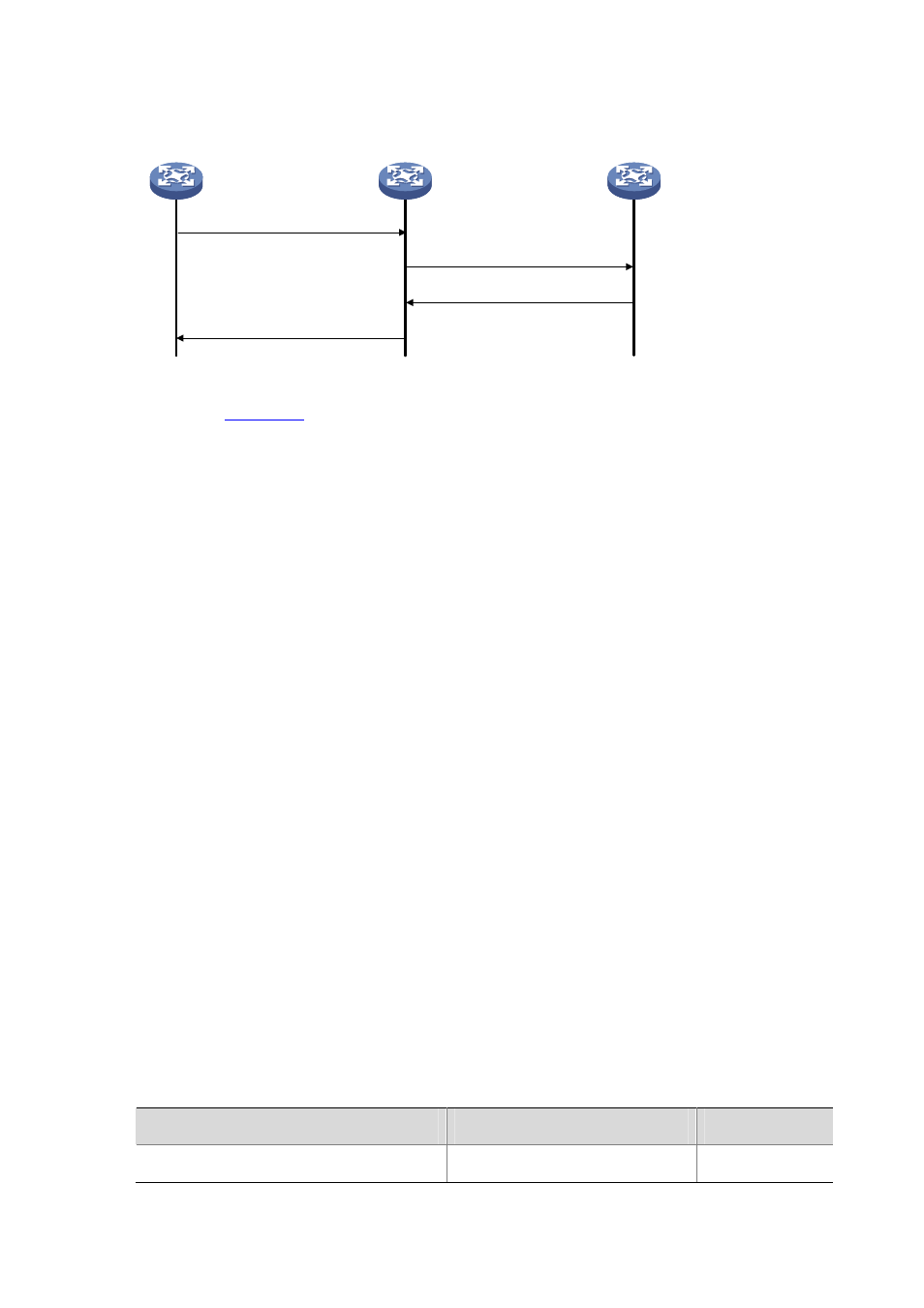Protocols and standards, Configuring the dhcpv6 client, Configuration prerequisites – H3C Technologies H3C S7500E Series Switches User Manual
Page 151: Configuration procedure

14-4
Figure 14-4 Operating process of a DHCPv6 relay agent
(1) DHCPv6 message from client
(4) DHCPv6 message to client
DHCPv6 client
DHCPv6 relay agent
DHCPv6 server
(2) Relay-forward
(3) Relay-reply
As shown in
, the DHCPv6 relay agent works as follows:
1) The DHCPv6 client sends a request to the multicast address FF02::1:2 of all the DHCPv6 servers
and relay agents.
2) After receiving the request, the DHCPv6 relay agent encapsulates the request into the Relay
Message Option of a Relay-forward message, and sends the message to the DHCPv6 server.
3) After obtaining the request from the Relay-forward message, the DHCPv6 server selects an IPv6
address and other required parameters and adds them into a reply which is encapsulated into the
Relay Message Option of a Relay-reply message. The DHCPv6 server then sends the Relay-reply
message to the DHCPv6 relay agent.
4) The DHCPv6 relay agent obtains the reply from the Relay-reply message and sends the reply to
the DHCPv6 client.
The DHCPv6 client uses the IPv6 address and other network parameters assigned by the DHCPv6
server to perform network configuration.
Protocols and Standards
z
RFC 3736: Stateless Dynamic Host Configuration Protocol (DHCP) Service for IPv6
z
RFC 3315: Dynamic Host Configuration Protocol for IPv6 (DHCPv6)
z
RFC 2462: IPv6 Stateless Address Autoconfiguration
Configuring the DHCPv6 Client
Configuration Prerequisites
To make the DHCPv6 client obtain network configuration parameters through stateless DHCPv6
configuration successfully, make sure that the DHCPv6 server is usable.
Configuration Procedure
Follow these steps to configure the DHCPv6 client:
To do…
Use the command…
Remarks
Enter system view
system-view
—